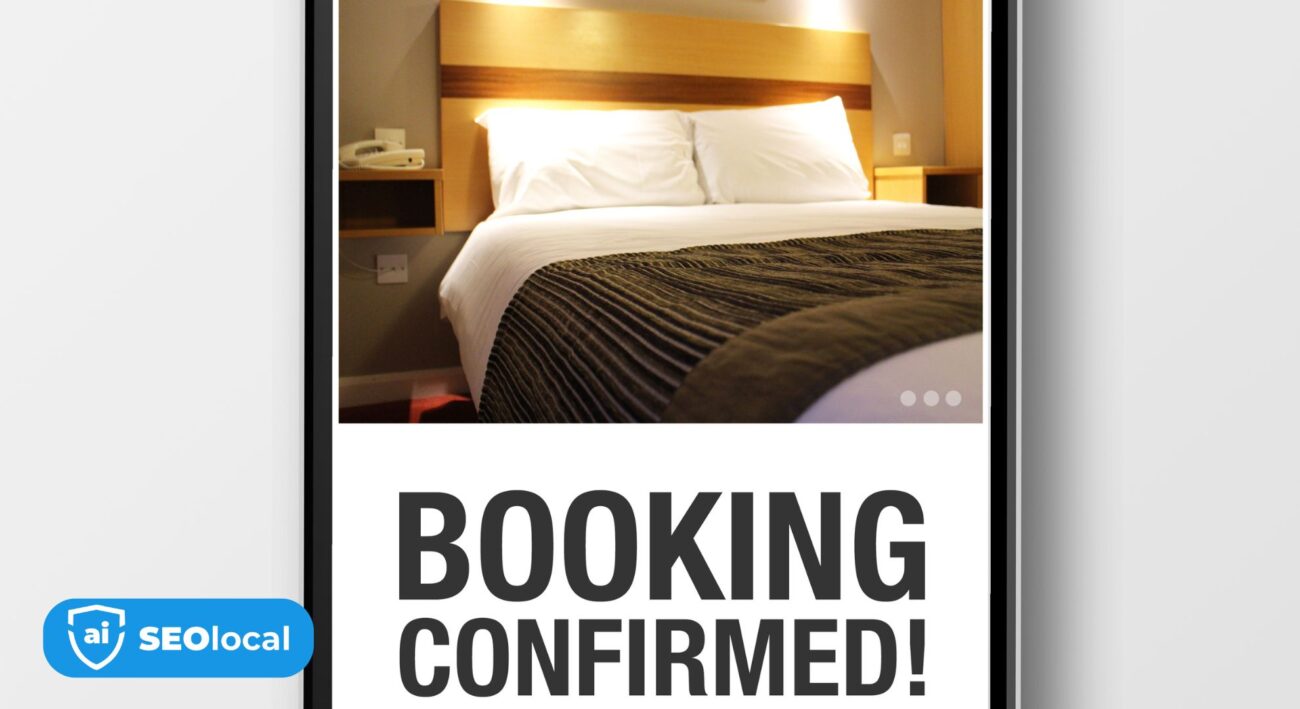- Advanced Local SEO Strategies
- Fundamentals of Local SEO
- Google Business Profile (GBP) Optimization
- Local Keywords and Content Strategy
- Local Link Building
- Local Paid Advertising
- Local Search Ranking Factors
- Local SEO Best Practices
- Local SEO Tools and Analytics
- Local Social Media Marketing
- Online Reviews and Reputation Management
- Technical SEO for Local Businesses
The Best Social Media Platforms for Local Businesses in 2025

Did you know businesses that prioritize digital engagement see 2.3x more revenue growth than competitors? With over 43% of marketers relying on social campaigns for maximum ROI, staying ahead requires strategic platform choices. This isn’t just about posting content—it’s about connecting where your audience spends 2 hours and 20 minutes daily.
As consumer habits evolve, so do opportunities to grow your reach. Platforms in 2025 prioritize hyper-local targeting, video-first content, and AI-driven analytics. These tools let you craft campaigns that resonate with nearby customers while tracking real-time performance.
Adapting your strategy now ensures you won’t fall behind. Whether you’re a bakery or a repair service, aligning with the right network builds trust and drives foot traffic. This guide cuts through the noise, showing exactly which channels deliver results for community-focused brands.
Key Takeaways
- Social campaigns offer the highest marketing ROI, outperforming traditional ads
- Users spend 140+ minutes daily on platforms, creating prime engagement windows
- Localized content strategies boost visibility in community searches
- Video and AI tools dominate 2025 platform updates
- Platform selection depends on audience demographics and business goals
Introduction to Social Media Trends in 2025
Imagine crafting social posts in seconds while AI handles the heavy lifting—73% of companies already do. Platforms now prioritize meaningful interactions over vanity metrics, forcing businesses to rethink their strategies. Algorithms reward genuine conversations, not just follower counts, making community-building essential.
Short videos under 60 seconds dominate feeds, but longer tutorials still drive authority. Platforms like Instagram Reels and YouTube Shorts capture attention quickly, while LinkedIn Articles build trust through detailed insights. Balance both formats to stay relevant.
| Content Type | Primary Purpose | Top Platforms |
|---|---|---|
| Short-form video | Quick engagement | TikTok, Instagram |
| Long-form guides | Expert positioning | YouTube, LinkedIn |
| AI-generated posts | Efficiency scaling | Facebook, X (Twitter) |
In-app shopping features now let users buy products without leaving apps. Facebook Shops and Pinterest Idea Pins turn casual browsers into customers instantly. Pair these tools with localized hashtags to attract nearby buyers.
Users expect faster responses, with 68% preferring chatbots for simple queries. Integrate automated replies without losing the human touch—schedule live Q&A sessions to maintain personal connections.
Understanding Your Target Audience in the United States
With 92% of U.S. adults active on social networks, ignoring audience analysis risks losing 76% of potential buyers. Start by mapping age groups to platforms—Gen Z dominates TikTok, while 35-54-year-olds drive Facebook engagement. Geographic targeting matters too: urban users prefer Instagram Stories, while suburban audiences engage more with Facebook Marketplace listings.
Behavior patterns reveal actionable insights. Analyze when your audience scrolls—parents often check feeds during school hours, while young professionals browse evenings. Content preferences vary: 58% of users click DIY tutorials, but 63% share local event updates. Track these habits through platform analytics or quick polls in Stories.

Build detailed personas using three methods:
- Platform dashboards showing peak activity days
- Surveys asking about purchase triggers
- Competitor analysis identifying content gaps
Regional differences shape messaging. A Texas BBQ joint might highlight family-style meals, while a Seattle coffee shop emphasizes sustainability. Adapt slang, visuals, and promotions to match local values. Tools like Facebook’s Local Awareness Ads help hyper-target neighborhoods.
Remember: 76% of users buy after seeing relevant posts. Test regional dialects in captions or location-specific offers. Refine weekly using engagement metrics to stay aligned with shifting preferences.
Analyzing Demographics and Monthly Active User Metrics
Choosing where to focus your marketing efforts begins with hard numbers. Platforms with billions of active users offer vast reach, but smart targeting requires analyzing who those users are. Let’s break down the latest data to optimize your local strategy.
Facebook leads with 3.05 billion monthly active users. Over half (56.8%) identify as male, with prime audiences aged 25-34 (30.6%) and 18-24 (23%). Instagram’s 2 billion active users skew younger—31.7% are 18-24 year-olds. YouTube’s 2.49 billion users show near-even gender splits (54.4% male, 45.6% female).
| Platform | Monthly Active Users | Top Age Group | Gender Split |
|---|---|---|---|
| 3.05B | 25-34 | 56.8% M / 43.2% F | |
| 2B | 18-24 | Not specified | |
| YouTube | 2.49B | 25-34 | 54.4% M / 45.6% F |
These numbers reveal engagement patterns. Restaurants might prioritize Facebook to reach decision-makers planning family meals. Fashion retailers could target Instagram’s trend-focused young adults. Service businesses may use YouTube tutorials to connect with DIY enthusiasts.
Seasonal shifts matter too. User activity spikes during holidays on visual platforms like Instagram, while Facebook engagement peaks on weekends. Track your analytics monthly to spot local trends—parent-focused content often performs better during school hours in suburban areas.
With 68% of purchases influenced by platform demographics, aligning your content with these metrics maximizes conversions. Test geo-specific offers using location tags, and adjust posting times based on age group browsing habits.
Leveraging Facebook for Local Business Growth
What if you could connect with 1.8 billion potential customers through groups alone? Facebook’s ecosystem offers unmatched tools to build neighborhood relationships while scaling your reach. With 72% of users checking business pages weekly, mastering these features positions you where conversations turn into conversions.
Key Facebook Features and Community Engagement
Start by optimizing your business page with service areas and operating hours. Enable appointment booking buttons and showcase customer reviews prominently. Neighborhood-focused posts perform 3x better when tagged with location-specific hashtags like #BostonEats or #MiamiFitness.
Facebook Marketplace drives 56% more local inquiries than standard listings. List seasonal offers or excess inventory here—parents search for kids’ gear, while renters hunt for furniture. Pair listings with Stories showing products in action.
- Create events for workshops or sales
- Share behind-the-scenes reels showing staff
- Pin weekly specials to the top of your page
Effective Facebook Advertising Strategies
Hyperlocal ads targeting 1-5 mile radii boost walk-in traffic by 38%. Use automated creative tools to test multiple headlines and images simultaneously. Retarget users who watched your videos but didn’t click.
Build loyalty through niche groups focused on local interests. A hardware store might host a “DIY Home Repairs” group, while a bakery could run “Gluten-Free Recipe Exchange.” Post tutorials and answer questions to establish authority.
Track metrics like “Local Page Followers” and “Community Shares” in Business Suite. Adjust content based on peak engagement times—weekday mornings for parents, evenings for professionals. Consistent interaction builds trust that generic ads can’t match.
Harnessing the Power of YouTube Marketing
What if your local business could appear in 2.5 billion search results monthly? YouTube’s dual role as a video platform and search engine makes this possible. With 61 million creators worldwide, it’s where people discover solutions through tutorials, reviews, and demonstrations.
Creating Engaging Video Content
Start by producing videos that answer common questions in your niche. A plumbing company might film “How to Fix a Leaky Faucet,” while a bakery could showcase “Behind-the-Scenes: Cake Decorating Techniques.” Authenticity matters—include customer testimonials and team introductions to build rapport.
Optimize each video with:
- Keyword-rich titles using tools like VidIQ
- Custom thumbails with bold text contrasts
- Time-stamped chapters for longer guides
Optimizing YouTube Ads for Maximum Reach
YouTube’s ad system lets you target viewers by location, interests, and search history. Use in-stream ads for brand awareness or overlay ads to promote limited-time offers. Bumper ads work well for event reminders due to their 6-second format.
| Ad Type | Best For | Average View Duration |
|---|---|---|
| In-stream | Storytelling | 12 seconds |
| In-feed | Product launches | 30+ seconds |
| Bumper | Urgent promotions | Full 6 seconds |

Collaborate with micro-influencers in your area to expand reach. A fitness studio could partner with local trainers for workout videos tagged with neighborhood landmarks. Track performance through YouTube Analytics to refine your strategy weekly.
Instagram Strategies for Local Brand Engagement
Visual storytelling drives 83% of purchase decisions on Instagram. With 1.1 billion users aged 18-34, this platform lets you showcase products through dynamic formats that resonate with younger audiences. Blend eye-catching reels with practical tutorials to build authentic connections.
Content Formats That Convert Local Followers
Master these four post types to boost visibility:
| Format | Use Case | Average Engagement Rate |
|---|---|---|
| Reels | Trend participation | 5.2% |
| Stories | Time-sensitive offers | 3.8% |
| Carousels | Product features | 4.1% |
| Guides | Local recommendations | 2.9% |
Tag locations in 78% of posts to appear in neighborhood searches. A coffee shop could film “Behind the Counter” stories showing baristas using local ingredients. Use AR filters to let followers virtually try products.
Partnering With Micro-Influencers
Collaborate with creators having 5K-50K followers in your area. They deliver 4x higher engagement than mega-influencers. Host takeovers where they demonstrate your services at recognizable community spots.
Enable shopping tags on posts featuring bestsellers. Users can tap to buy without leaving the app—53% of Gen Z prefers this seamless experience. Track performance through Instagram Insights to refine your mix of educational and promotional content.
Embracing WhatsApp Communication for Customer Support
Ever wish your phone could handle customer questions while you focus on operations? WhatsApp Business makes this possible, with 2 billion monthly users preferring its instant messaging for quick resolutions. Over 45% of users are aged 18-34—prime customers who value speed and convenience.
This platform excels at bridging formal support systems and casual conversations. Users can ask about store hours, track orders, or resolve issues without calling or emailing. It’s why 68% of shoppers rate messaging apps higher than traditional contact methods.
Streamlining Customer Interaction with WhatsApp
Set up a Business Profile with your address, services, and catalog. Automated greeting messages answer FAQs during off-hours, while quick replies handle common inquiries. Link your CRM to organize conversations and assign tickets to team members.
Run click-to-chat ads on Facebook and Instagram to start dialogues instantly. A clothing boutique could target ads with “Message Us” buttons showing new arrivals. Track response times and satisfaction rates in WhatsApp’s analytics dashboard.
Keep communication professional yet friendly. Share order confirmations with emojis or send video updates about delays. Balance automation with personal touches—like addressing customers by name—to build trust in every exchange.
Exploring TikTok as a Platform for Local Engagement
Have you considered how a 30-second video could triple your store visits? TikTok’s 1 billion active users—36.6% aged 18-24—offer unmatched potential to connect with younger audiences. This platform thrives on spontaneity, where authentic moments often outperform polished ads.
Capitalizing on Viral Trends and Creative Content
Success here starts with trend-jacking. Monitor the “For You” page daily to spot challenges or sounds gaining traction locally. A pizza shop might recreate a viral dance while tossing dough, adding neighborhood landmarks in the background.
Use these tactics to boost visibility:
- Post between 6-9 PM when engagement peaks
- Mix 3-5 niche hashtags (#BrooklynEats) with broad ones (#FoodTok)
- Reply to comments within 60 minutes to please the algorithm
Partner with creators who already engage your ideal customers. A florist could collaborate with a lifestyle influencer to demonstrate bouquet-making at their shop. Track results through TikTok’s analytics—watch for spikes in profile visits after trending posts.
Enable TikTok Shop to tag products in videos. Users who click through spend 2.7x more than average visitors. Blend entertainment with practicality: show your team solving local problems while subtly highlighting services.
The Best Social Media Platforms for Local Businesses in 2025
Choosing where to focus your efforts requires matching platform strengths to neighborhood needs. Each channel serves distinct purposes—Instagram excels at visual discovery, while LinkedIn builds professional credibility. Analyze these differences to allocate resources effectively.
Comparing Platform Benefits and User Engagement
Instagram Reels generate twice the engagement of static posts, ideal for showcasing products through quick demos. LinkedIn’s 90 million US professionals offer B2B networking opportunities, while Pinterest’s 95 million planners seek inspiration for future purchases.
| Platform | Key Strength | Top Use Case |
|---|---|---|
| Community groups | Local event promotion | |
| TikTok | Trend participation | Youth-focused campaigns |
| YouTube | Educational content | Service tutorials |
| Purchase planning | Seasonal product launches |
Utilizing Data-Driven Metrics Across Platforms
Track three core metrics: engagement rates for content resonance, click-through rates for interest levels, and conversion rates for sales impact. Compare these across channels weekly using native analytics tools.
Combine platforms strategically—pair TikTok videos with Pinterest Idea Pins for multi-stage customer journeys. A bakery might use Instagram Stories for daily specials while maintaining LinkedIn articles about sourcing local ingredients. Consistent messaging across channels reinforces brand identity while catering to different user behaviors.
Integrating Advanced Advertising Strategies
Ready to amplify results without doubling your workload? Modern advertising strategies now deliver $5.20 ROI per dollar spent through intelligent automation. Platforms analyze user behavior patterns to serve hyper-relevant ads—87% of which hit their intended audiences precisely.
Leveraging AI and Automation Tools
Artificial intelligence handles repetitive tasks while optimizing outcomes. Tools like dynamic creative optimization adjust visuals and messaging in real-time based on engagement signals. Automated bid management shifts budgets to high-performing campaigns, cutting wasted spend.
Set rules for campaign adjustments: pause ads under 2% CTR or scale those driving conversions. AI predicts peak engagement windows, ensuring ads appear when users most likely convert. This reduces manual oversight while boosting efficiency.
Implementing Multi-Platform Campaigns
Coordinate messaging across networks using sequenced storytelling. Start with TikTok teasers, retarget viewers with Facebook carousels, then close sales through Instagram shopping ads. Attribution models track interactions across devices and platforms.
Sync campaigns with email workflows and search ads. If someone abandons a cart, trigger follow-up messages via WhatsApp and display retargeting banners. Unified analytics reveal which combinations drive store visits or online purchases.
| Tool Type | Primary Function | Impact Metric |
|---|---|---|
| AI Audiences | Predictive targeting | +37% relevance |
| Automated Bidding | Budget allocation | -22% CPA |
| Cross-Platform Dashboards | Performance tracking | +19% ROAS |
Enhancing Engagement with Short-Form and Long-Form Content
Balancing quick hooks with deep dives separates thriving brands from stagnant ones. Today’s audiences crave snackable videos and detailed guides—each serving distinct purposes in the customer journey. Mastering both formats keeps you visible in feeds while building lasting credibility.
Short-Form Video Trends and Best Practices
Capture attention within 5 seconds using trending sounds or surprising visuals. Local restaurants film “Order This Now” reels showing signature dishes sizzling on grills. Use location tags like #NYCEats to appear in neighborhood searches. Post during lunch rushes or evening scroll times for maximum visibility.
Prioritize authenticity over polish. A hardware store could share 15-second fixes for common home issues. Track completion rates—videos watched past 75% signal strong interest. Remix top-performing clips into carousels or Stories for extended reach.
Long-Form Content for Thought Leadership
Build authority through 10-minute tutorials or case studies. A roofing company might document a full installation process, highlighting material choices. Host webinars answering niche questions, then repurpose segments into blog posts.
Optimize YouTube descriptions with local keywords like “Austin landscaping tips.” Include timestamps for easy navigation. Share transcripts on LinkedIn Articles to engage professionals seeking detailed insights. This dual approach positions you as both helpful neighbor and industry expert.
Blend formats strategically. Turn webinar highlights into TikTok tutorials or expand viral reels into podcast episodes. Consistent messaging across lengths reinforces brand identity while catering to varied consumption habits.
FAQ
How do I choose the right social platforms for my local business?
Focus on where your target audience spends time. Analyze demographics like age, location, and interests using platform insights. For example, Facebook and Instagram work well for visual storytelling, while WhatsApp excels in direct customer support.
Why should local businesses prioritize video content in 2025?
Video drives higher engagement, especially short-form clips on TikTok and Instagram Reels. Platforms like YouTube also reward long-form videos with better search visibility, helping establish thought leadership in your niche.
Can small businesses compete with larger brands on Facebook?
Yes. Use hyper-local targeting in ads and join community groups to build trust. Features like Facebook Shops let you showcase products directly, while Events promote local activations without big budgets.
How effective are WhatsApp Business tools for customer interaction?
WhatsApp’s instant messaging and automated responses streamline support. Over 2 billion users prefer it for quick queries, order updates, and personalized offers—ideal for building repeat customers in your area.
What makes TikTok valuable for local engagement strategies?
Its algorithm favors creative, location-based content. Participate in viral challenges, showcase behind-the-scenes operations, or partner with micro-influencers to reach nearby audiences through trending sounds and hashtags.
Should I invest in YouTube ads if my budget is limited?
Yes. Use YouTube’s precise targeting to display ads to users searching for related topics. Short bumper ads (6 seconds) work for brand awareness, while longer skippable formats suit detailed product demos.
How do AI tools improve social media advertising?
AI analyzes user behavior to optimize ad spend, predict trends, and personalize content. Platforms like Instagram and Facebook offer automated bidding and dynamic creatives, saving time while boosting ROI.
Why combine long-form and short-form content in my strategy?
Short videos (under 60 seconds) grab attention quickly, while long-form posts (blogs, YouTube tutorials) establish expertise. This mix keeps your brand top-of-mind across different audience preferences.





